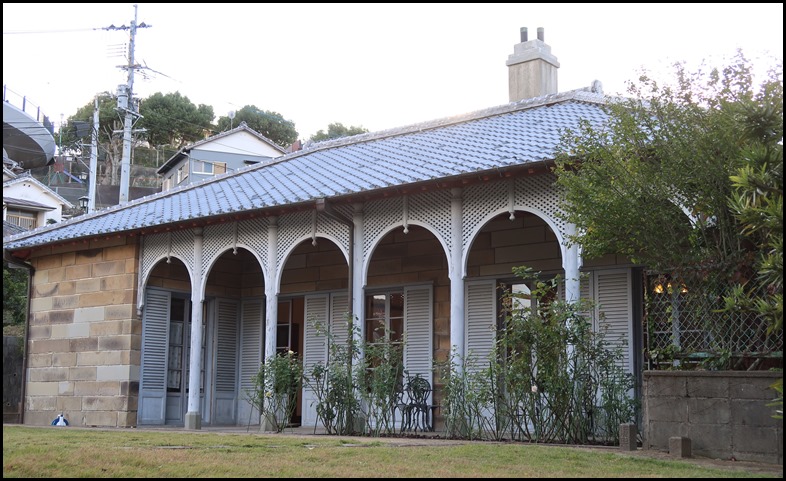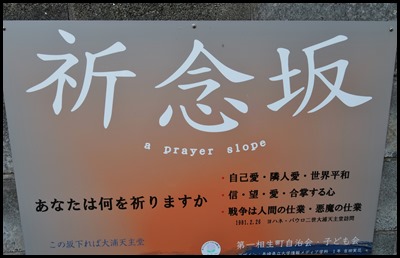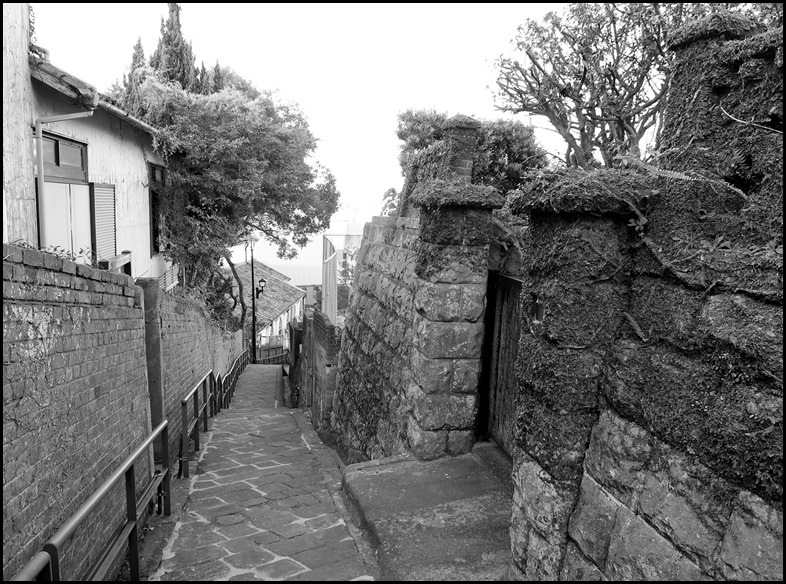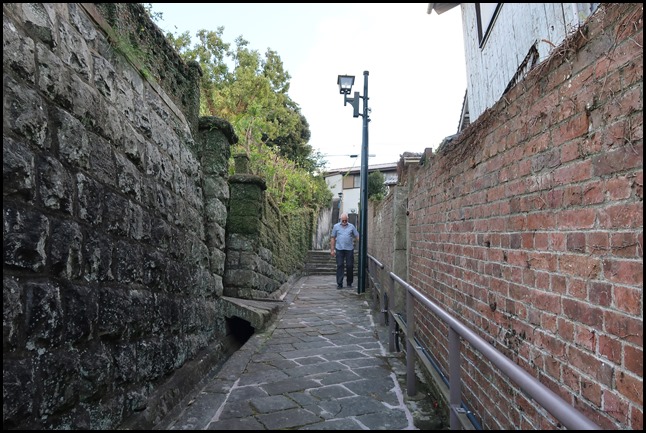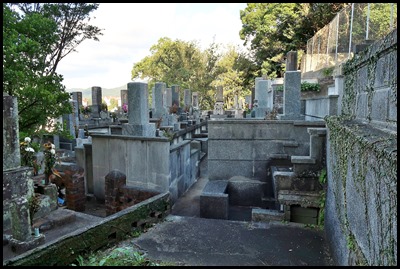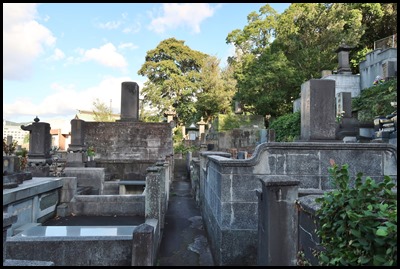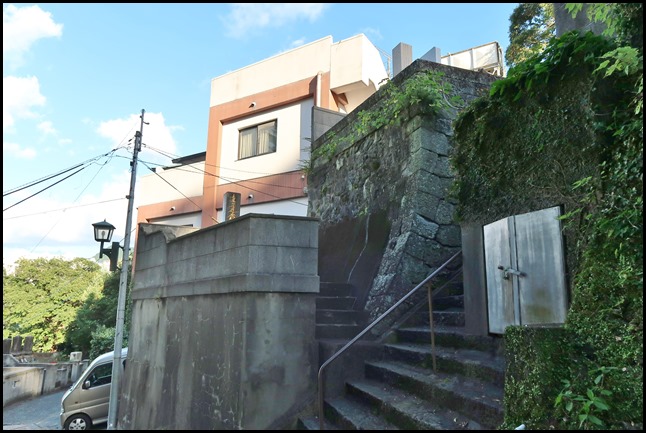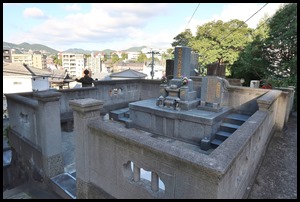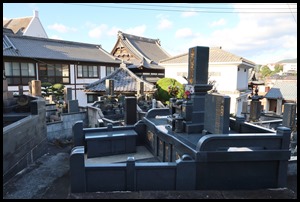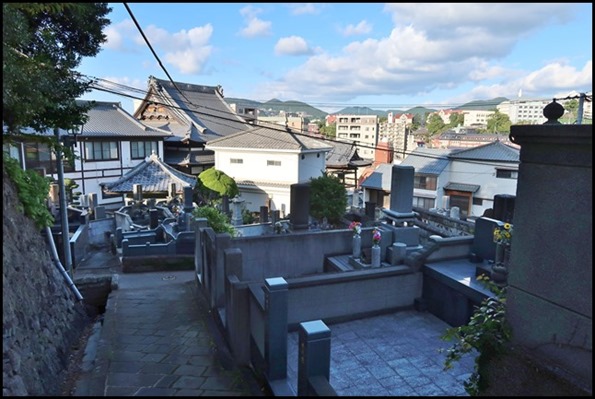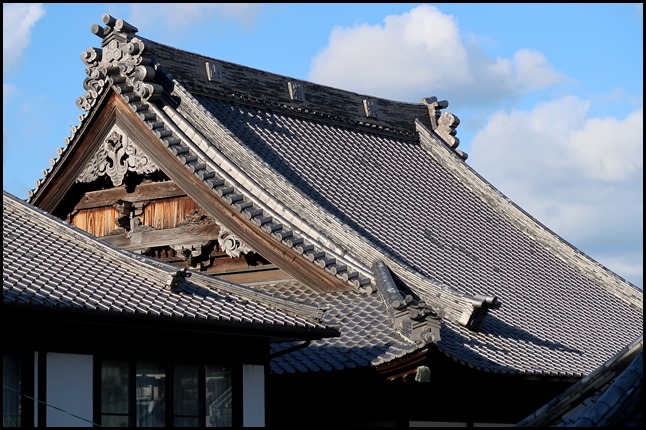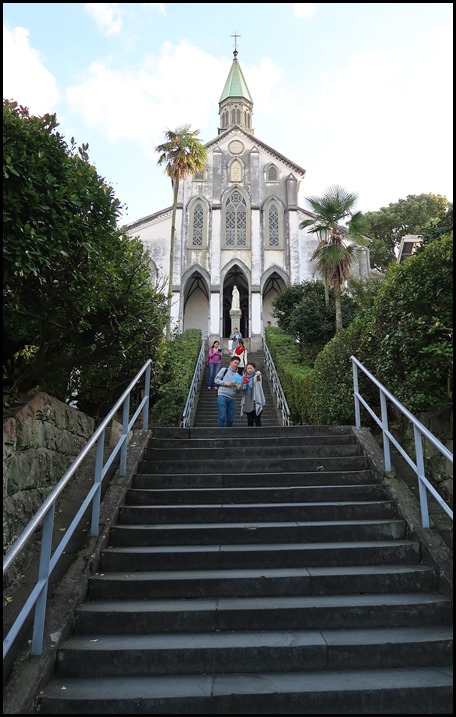To Oura Church

|
Oura Catholic Church, Nagasaki
We left Glover House and followed the signs down a steep path, passing Minamiyamate Rest House. Built between 1864 and 1865, it is used as a resting facility for visitors.
Just as we were thinking that this skinny, steep path wouldn’t be so good coming up the other way and the residents must be thrilled with the lifts, we saw a sign. Never seen a prayer slope before.
In part, the prayer slope levelled out a bit before becoming steep once more. To the left, the backs of houses, to the right, a children’s playground and several entrances to a graveyard. The stone paved slope was constructed during the Foreign Settlement Period and it is preserved as a precious remnant of the past.
Looking back toward Big Bear.
The graveyard near the top.
At the bottom of the prayer slope we could see how houses seem to be tucked in tight like jigsaw pieces.
More memorials as the path took a sharp left.
Still wowed by the roof tiles here in Japan.
We arrive at the church to find we have to go up the steps.

Oura Church is dedicated to The Twenty-Six Saints of Japan – this monument is at Nishizaka, Nagasaki.
Chronology: 1549 Francis Xavier arrives in Japan and begins missionary work 1587 Toyotomi Hideyoshi orders the expulsion of Catholic priests 1593 Petro Baptista is sent to Japan by the Spanish Philippines governor 1596 The San Filipe founders off the coast of Tosca (Kochi Prefecture) 1597 The group of 26 is executed at Nishizaka in Nagasaki 1614 The Tokugawa Shogunate enforces a nationwide ban on Christianity 1627 The 26 martyrs are beatified by Pope Urban VIII (-1629) 1862 The 26 martyrs are canonised by Pope Pius IX 1865 The completed Oura Catholic Church is dedicated to the Twenty-Six Saints of Japan 1962 The monument to the Twenty-Six Saints by Funagoshi Yasutake reaches completion.
History: In response to a request for a tribute from Toyotomi Hideyoshi, the governor of the Spanish Philippines sent Franciscan priest Pedro Baptista to Japan as his emissary. The latter gained permission to reside in Kyoto but ignored the injunction to refrain from missionary activity, an attitude later copied by Franciscan priest following him to Japan.In 1596, the Spanish ship San Filipe foundered on the coast of Japan, and the crewmembers boasted that colonising forces would follow in the footsteps of the priests. Alarmed by this information, Hideyoshi arrested the Franciscan priests and their Japanese followers, and the group of 26 including Jesuit affiliates Brother Paul Miki, John Goto and Diego Kisai were executed on the 5th of February 1597.
The Twenty-Six from left to right on the monument: Pablo Suzuki, 49, born in Owari, Catholic brother. Gabriel de Duisco, 19, born in Isei. Juan Kisaka, 28, born in Kyoto – former silk weaver. Thomas Xico (Dangi), 36, born in Isei, early Franciscan monk. Francisco of Nagasaki, 46, born in Kyoto, former physician to Otomo Sorin. Joaquin Sakakibara, 40, born in Osaka. Thomas Kozaki, 14, born in Isei, son of Michael Kozaki. Bonaventura of Miyako, born in Kyoto. Leo Karasumaru, 48, born in Owari, brother of Paulo Ibaraki. Mathias of Miyako, born in Kyoto. Francisco de San Miguel, 53, Spanish monk active in Japan since 1593. Francisco Branco, 28, Spanish Franciscan priest fluent in Japanese. Gundisalvus Garcia, 40, born in India, Portuguese monk. Philip of Jesus, 24, born in Mexico, Franciscan monk. Martin of the Ascension, 30, Spanish Franciscan priest. Pedro Baptista, 48, Spanish Franciscan priest and emissary. Antonio Dainan, 13, born in Nagasaki. Luis Ibaraki, 12, born in Owari, the youngest of the 26. Juan Soan de Goto, 19, born in the Goto Islands. Paulo Ibaraki, 54, former samurai from Owari. Paul Miki, 33, born in Settsu, first graduate of the Arima Sanctuary. Diego (James) Kisai, 64, born in Bizen. Miguel Kozaki, 46, born in Isei, former bow maker. Pedro Sukejiro, born in Kyoto, joined the group along the way. Cosme Takeya, 38, born in Owari, former sword maker. Gaius Francis, born in Kyoto, joined the group along the way.
CONTINUED |
